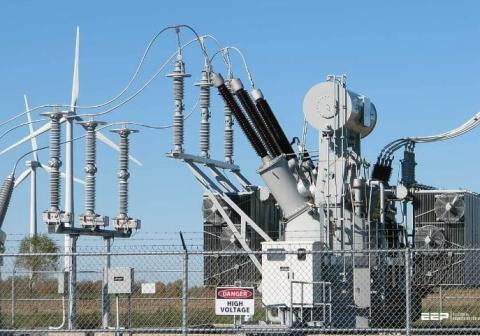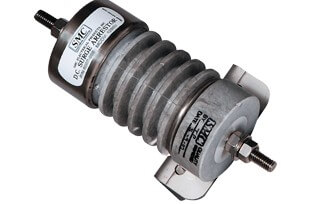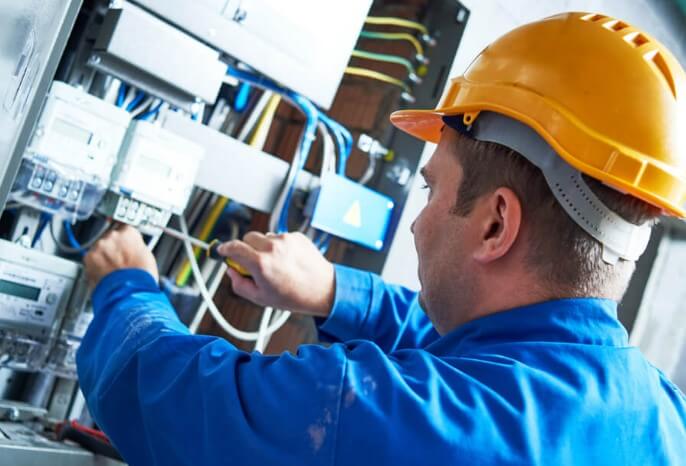
In the dynamic world of railway engineering, ensuring the safety and reliability of electrical systems is paramount. The extensive use of sophisticated electrical and electronic equipment in modern railways necessitates the protection of these systems from power surges. This is where power surge arrestors, also known as surge protection devices (SPDs), come into play. Swartz Engineering, a leader in electrical engineering solutions, provides valuable insights into the application of power surge arrestors in railway systems. This article delves into when and why you should use a power surge arrestor in railway applications.
Understanding Power Surges
Before discussing the specific application of power surge arrestors in railways, it's essential to understand what power surges are and how they occur. A power surge, also known as a transient voltage, is a sudden and brief spike in electrical voltage. These surges can be caused by various factors, including:
1. Lightning Strikes: One of the most common causes of power surges. When lightning strikes near a railway system, it can induce a high voltage surge in the electrical network.
2. Switching Operations: Routine operations like switching on or off high-power equipment can cause significant surges.
3. Faulty Wiring: Poor electrical connections and outdated wiring can lead to power surges.
4. Electromagnetic Interference (EMI): Electrical interference from other devices and systems can also cause surges.
Power surges, if not properly managed, can damage sensitive railway equipment, leading to operational disruptions, safety hazards, and significant financial losses.
What is a Power Surge Arrestor?
A power surge arrestor is a device designed to protect electrical equipment from voltage spikes. It operates by diverting excess voltage away from the protected equipment and safely dissipating it. Surge arrestors are crucial in maintaining the integrity of electrical systems, especially in environments prone to frequent power surges like railways.

GET IN TOUCH
The ultimate solution for reliable power control! call us at 276-285-3841
The Importance of Power Surge Arrestors in Railway Systems
Railway systems are complex networks comprising various electrical and electronic components, including signaling systems, communication networks, control systems, and traction power supply systems. These components are vital for the safe and efficient operation of trains. Here’s why power surge arrestors are indispensable in railway systems:
1. Protection of Sensitive Equipment: Modern railway systems use advanced electronics for control and communication. These devices are highly sensitive to voltage spikes. Surge arrestors protect these components from damage, ensuring uninterrupted operation.
2. Safety Assurance: Power surges can cause equipment failures, leading to accidents or operational disruptions. By protecting critical systems, surge arrestors contribute to overall railway safety.
3. Reduction of Maintenance Costs: Frequent surges can lead to repeated damage and costly repairs. Using surge arrestors reduces the likelihood of damage, thereby lowering maintenance expenses.
4. Enhanced Reliability: Reliable railway operation is essential for passenger satisfaction and freight efficiency. Surge arrestors help maintain system reliability by preventing downtime caused by electrical surges.
5. Compliance with Standards: Many railway regulations and standards require the use of surge protection to ensure safety and reliability. Installing surge arrestors helps rail operators comply with these regulations.
When to Use Power Surge Arrestors in Railway Systems
The application of power surge arrestors in railway systems depends on various factors, including the specific components being protected and the environmental conditions. Here are some critical instances when the use of power surge arrestors is recommended:
1. At the Traction Power Supply Points
Traction power supply systems are crucial for the operation of electric trains. These systems are highly susceptible to power surges due to their exposure to external environmental factors and the high power levels they handle. Surge arrestors should be installed at key points in the traction power supply network, including:
- Substations: Substations that convert high-voltage power from the grid to the appropriate level for railway use are prime candidates for surge protection. Surges at substations can propagate through the network, affecting multiple trains and systems.
- Overhead Lines and Third Rails: These components are directly exposed to the elements and are vulnerable to lightning strikes and other surges. Installing surge arrestors at intervals along the overhead lines and at critical points of the third rail can prevent surges from entering the traction power system.
2. Signaling and Communication Systems
Railway signaling and communication systems are vital for the safe and efficient movement of trains. These systems often use sophisticated electronics that are highly sensitive to voltage fluctuations. Power surge arrestors should be employed to protect:
- Signal Control Centers: These hubs control the signals across vast railway networks. A surge here can disrupt the entire signaling system, leading to delays and potential safety hazards.
- Trackside Equipment: Trackside signaling equipment, including signal lights, sensors, and switches, should be equipped with surge arrestors to protect against surges caused by lightning or other external factors.
- Communication Towers: Communication towers that facilitate wireless communication between trains and control centers are also vulnerable to power surges. Protecting these towers ensures uninterrupted communication, which is critical for railway operations.
3. Onboard Systems
Modern trains are equipped with a range of onboard electronic systems, including control systems, passenger information systems, and HVAC (Heating, Ventilation, and Air Conditioning) systems. These systems need protection from power surges to ensure passenger comfort and operational efficiency. Surge arrestors should be installed to protect:
- Control Electronics: The electronic systems that control the train’s operation, including braking, acceleration, and navigation, must be protected to prevent malfunctions.
- Passenger Information Systems: Displays and announcement systems that provide information to passengers need surge protection to avoid disruptions and maintain service quality.
- HVAC Systems: Ensuring that the HVAC systems are protected from surges is essential for maintaining a comfortable environment for passengers.
4. Maintenance Facilities
Railway maintenance facilities are equipped with various tools and machines that rely on electrical power. Power surges can damage this equipment, leading to costly repairs and delays in maintenance activities. Surge arrestors should be installed to protect:
- Workshop Equipment: Tools and machines used for maintaining and repairing trains should be safeguarded against voltage spikes to prevent damage and ensure the availability of critical equipment.
- Testing Equipment: Electrical testing and diagnostic equipment are particularly sensitive to surges. Protecting these devices ensures accurate diagnostics and efficient maintenance operations.
Factors Influencing the Selection of Power Surge Arrestors
Selecting the appropriate power surge arrestors for railway systems involves considering several factors:
1. Voltage Rating: The voltage rating of the surge arrestor must match the operating voltage of the system it protects. Using a surge arrestor with an incorrect voltage rating can render it ineffective.
2. Current Capacity: The surge arrestor must be capable of handling the maximum surge current expected in the system. This ensures that the device can effectively divert and dissipate the surge without being damaged.
3. Response Time: The response time of the surge arrestor is critical. It should react quickly enough to protect sensitive equipment from fast-rising voltage spikes.
4. Environmental Conditions: The operating environment plays a significant role in the selection process. For instance, surge arrestors used in outdoor applications need to be weather-resistant and capable of withstanding harsh conditions.
5. Standards and Certifications: Compliance with industry standards and certifications ensures that the surge arrestors meet the required safety and performance criteria. It is essential to select devices that adhere to relevant railway and electrical standards.

GET IN TOUCH
The ultimate solution for reliable power control! call us at 276-285-3841
Implementing Surge Protection: Best Practices
Implementing an effective surge protection strategy involves more than just installing surge arrestors. Here are some best practices to ensure optimal protection:
1. Conduct a Risk Assessment: Assess the railway system to identify the areas most vulnerable to power surges. This helps in prioritizing protection for critical components.
2. Regular Maintenance and Testing: Surge arrestors should be regularly inspected and tested to ensure they are functioning correctly. Replace any devices that show signs of wear or damage.
3. Integration with Other Protective Devices: Surge arrestors should be used in conjunction with other protective devices such as circuit breakers and fuses to provide comprehensive protection.
4. Proper Grounding: Ensure that all surge arrestors are properly grounded. Effective grounding is essential for dissipating surge energy safely.
5. Documentation and Compliance: Maintain detailed records of all surge protection installations and ensure compliance with relevant standards and regulations.
Conclusion
In the railway industry, the importance of protecting electrical and electronic systems from power surges cannot be overstated. Power surge arrestors play a critical role in safeguarding sensitive equipment, ensuring operational reliability, and enhancing safety. Swartz Engineering’s expertise in electrical engineering solutions highlights the necessity of incorporating surge protection into railway systems.
By understanding when and where to use power surge arrestors—at traction power supply points, signaling and communication systems, onboard systems, and maintenance facilities—railway operators can significantly mitigate the risks associated with power surges. Adopting best practices for implementation and maintenance further ensures that surge protection measures remain effective over time.
In conclusion, power surge arrestors are indispensable in modern railway systems. Their strategic application not only protects valuable equipment but also contributes to the overall efficiency and safety of railway operations. As railway networks continue to evolve and integrate more advanced technologies, the role of surge protection will become increasingly vital, making it an essential consideration for railway engineers and operators.
Our Expert Services
Swartz Engineering provides top-quality products to meet our customers' needs. We also make sure our products work reliably and safely. Our products include:
- Type 76 DC Relay
- Type 82 DC Relay
- Swartz Engineering’s Type 64 Ground Relay
- Type 32 Reverse Current Relay
- Type 150 DC
- CSM Shield Monitor
- Metal Oxide Surge Arrestors
- Transducers
- MVIS SL Slim-line Contactor
- Fully-tested Power Control Rooms
- Swartz Engineering’s Portable Substations
CONTACT US
Take the first step towards powering up your operations! call us at 276-285-3841
